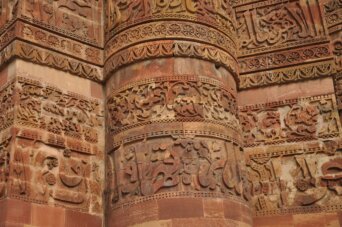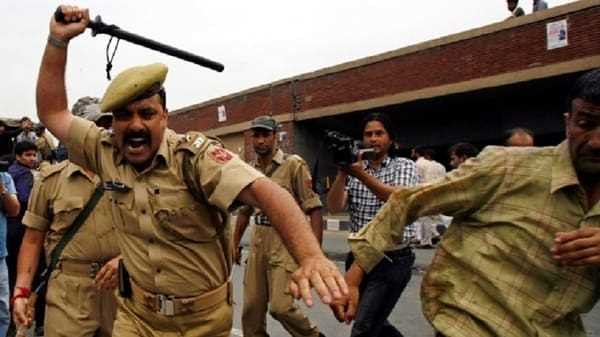- About
- Topics
- Picks
- Audio
- Story
- In-Depth
- Opinion
- News
- Donate
- Signup for our newsletterOur Editors' Best Picks.Send
Read, Debate: Engage.
| topic: | Xenophobia |
|---|---|
| located: | India, Pakistan |
| editor: | Tish Sanghera |
Until around the time of India’s independence in 1947, the Urdu language was widely used between people of all religions in North India and within the bureaucracy. But as communal conflicts broke out between Hindus and Muslims leading to the carving out of Pakistan from the Indian land mass, the language became increasingly associated with Islam and Pakistan, giving rise to the idea that speaking it was ‘anti-Indian’. Hindi, a language which relies on Sanskrit (the ancient language of Hindu scripture), as opposed to Persian in Urdu, was proclaimed India’s official language during the drafting of its constitution.
A recent film set in the historical city of Lucknow tells the story of an Urdu college professor struggling to retain students, keep his department from being shut down and counter the stigma that has labelled Urdu a language not worth learning in India today. Titled Sehar and selected at the Asian Film Festival in Barcelona, the film explores the decline and demonisation of the Urdu language, which is linguistically similar to Hindi but written in the Nastalik script.
In the film, professor Kaul, is accused of being a “Pakistan lover” and attacked for his passionate belief that Urdu is the language of poetry, love and the high arts. He battles a rising tide of Islmapohobia and muslim prejudice, preaching that Urdu deserves to be studied and cherished for its deep history in India.
Though Urdu has seen a rapid decline in use, one key arena of influence has been a keen adopter of the language throughout the decades – Bollywood. India’s filmmakers are wedded to the inherent lyricism and beauty associated with Urdu and its Persian hues. As such it is not uncommon to hear iconic songs studded with nuggets of Urdu vocabulary and phrases.
But with the rise of right-wing Hindu nationalist groups in the country, Urdu’s demonisation as anti-Indian and pro-Pakistani has been cemented. Outrage recently erupted on social media when the popular clothing brand FabIndia used Urdu to name its newest collection for Diwali, a Hindu festival. Boycotts and threats of violence ensued as radical Hindutva groups claimed they had been insulted and a nervous FabIndia quickly removed the article.
Prime Minister Modi’s party, the Bharatiya Janata Party, in particular has embarked on a mission to ‘de-Islamify’ Indian culture. The BJP has embarked on a mass renaming spree, ridding historic place names of their Mughal history and Islamic sounds. For example, the city of Aurangabad became the more Sanskrit-sounding Prayagraj. Indeed this project has extended beyond language and society to history itself. Researchers have found that, under the current government, textbooks have been rewritten to laud historical Hindu figures - and play down India’s ‘muslim era’.
In addition to Urdu, the film shows how the Muslim identity itself is demonised and portrays the growing fear within the community of diplaying these symbols. In recent weeks campaigns by Hindu groups in the city of Gurugram, near Delhi, reached a climax as they blocked public spaces where Muslims often gathered to offer Friday prayers, sending a message that Muslim residents were now unwelcome in their own city. As such, certain scholars now offer a bleak and unsparing view of India’s future direction as an ‘ethnic democracy’ where Muslims and other minorities are second-class citizens. If realised, in this future, the Urdu language could very well not be the only casualty.
Image by PDPics

